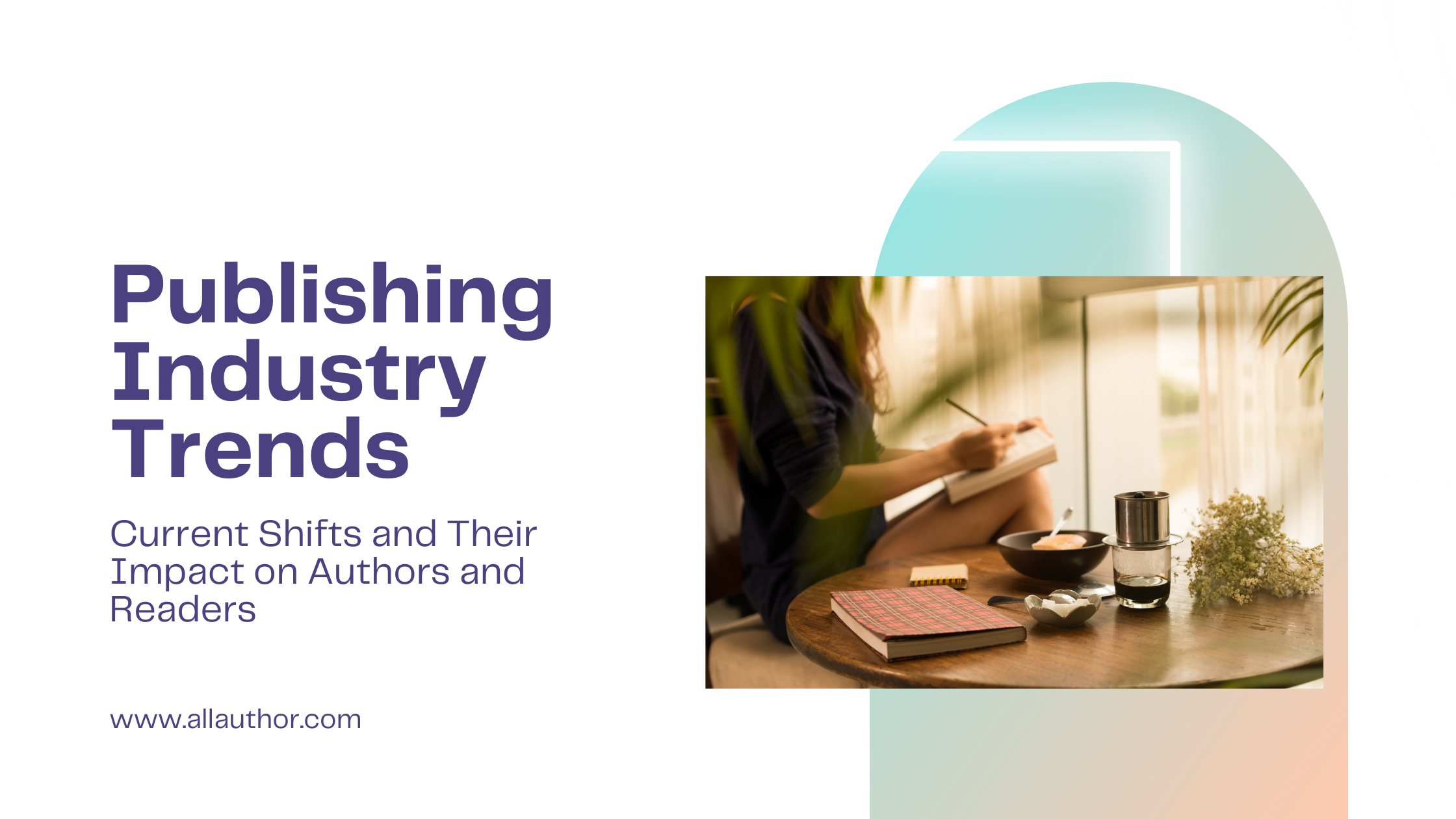The publishing industry is in a state of dynamic evolution, driven by technological advancements, changing consumer behaviors, and innovative business models. For authors and readers alike, these trends bring both opportunities and challenges. Let’s delve into the key trends shaping the publishing landscape today and explore how they impact the key stakeholders in this ecosystem.
1. Digital Transformation
The rise of e-books and audiobooks continues to reshape the publishing industry. Digital formats offer convenience, accessibility, and often lower prices compared to traditional print books. For authors, digital publishing provides a faster route to market and the potential for higher royalty rates, especially through self-publishing platforms like Amazon Kindle Direct Publishing (KDP) and Audible.
Impact on Authors
– Increased Reach: Digital formats allow authors to reach a global audience without the logistical constraints of print distribution.
– Self-Publishing Opportunities: Authors can bypass traditional gatekeepers, gaining more control over their work and earnings.
– Challenges: Increased competition and the need for self-marketing can be daunting for many authors.
Impact on Readers
– Accessibility: Readers have access to a vast library of books at their fingertips, often at lower costs.
– Diverse Formats: The availability of audiobooks caters to those who prefer listening over reading, broadening the consumption of literature.
2. Subscription Services
Subscription models, such as Kindle Unlimited, Scribd, and Audible, are gaining traction. These services offer unlimited access to a large selection of books for a monthly fee, similar to Netflix for movies.
Impact on Authors
– Revenue Model: Authors earn based on pages read or listens, which can lead to unpredictable earnings compared to traditional sales.
– Exposure: These platforms can significantly increase an author’s exposure and reader base.
Impact on Readers
– Cost-Effective: Readers can enjoy a wide variety of books for a fixed monthly cost, encouraging more reading.
– Discoverability: Curated recommendations and vast libraries make it easier for readers to discover new authors and genres.
3. Print-on-Demand (POD)
Print-on-Demand technology allows books to be printed only when an order is placed, reducing the need for large print runs and inventory.
Impact on Authors
– Flexibility: Authors can publish without significant upfront costs and without worrying about unsold inventory.
– Sustainability: POD is more environmentally friendly, reducing waste from unsold books.
Impact on Readers
– Availability: Readers can access a wider range of titles that may not be available in traditional bookstores due to the reduced financial risk for publishers and authors.
– Customization: POD allows for personalized books and niche genres to flourish.
4. Social Media and Influencer Marketing
Social media platforms and book influencers (Bookstagram, BookTok) play a crucial role in book promotion and reader engagement.
Impact on Authors
– Direct Engagement: Authors can connect directly with their audience, build a loyal fan base, and receive immediate feedback.
– Marketing Power: Effective use of social media can lead to viral success and increased sales.
Impact on Readers
– Community Building: Readers can join communities around their favorite genres or authors, enhancing their reading experience through shared discussions and recommendations.
– Discoverability: Social media algorithms and influencer recommendations help readers discover new books tailored to their interests.
5. Diversity and Inclusion
There is a growing demand for diverse voices and stories in the publishing industry, reflecting broader societal movements towards inclusivity.
Impact on Authors
– Opportunities: Authors from marginalized communities find more opportunities to share their stories, leading to a richer literary landscape.
– Challenges: Despite progress, authors may still face barriers to entry and biases within the industry.
Impact on Readers
– Representation: Readers benefit from a wider range of perspectives and experiences, fostering empathy and understanding.
– Quality and Variety: Increased diversity in publishing leads to a richer variety of high-quality content.
6. Hybrid Publishing Models
Hybrid publishing, which combines elements of traditional and self-publishing, is becoming more popular. Authors might pay for publishing services while retaining more control and higher royalties.
Impact on Authors
– Control and Support: Authors can benefit from professional services while maintaining creative and financial control.
– Investment: This model often requires authors to invest their own money upfront.
Impact on Readers
– Quality: Books published through hybrid models can maintain high production values, similar to traditionally published books.
– Variety: Readers have access to a broader range of titles that might not fit into the traditional publishing mold.
Conclusion
The publishing industry is undergoing significant changes, driven by digital innovation, shifting consumer preferences, and a push for greater diversity and inclusion. For authors, these trends offer new avenues for publication and audience engagement but also present challenges in terms of competition and self-promotion. For readers, the evolving landscape means greater accessibility, variety, and opportunities to discover new voices and stories. As the industry continues to adapt, the relationship between authors and readers will undoubtedly become even more dynamic and interactive, shaping the future of storytelling in exciting ways.

